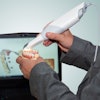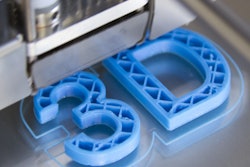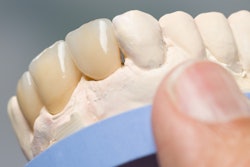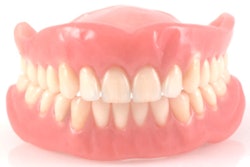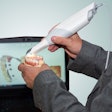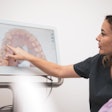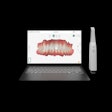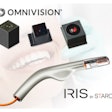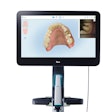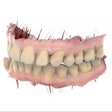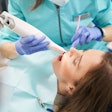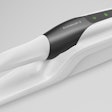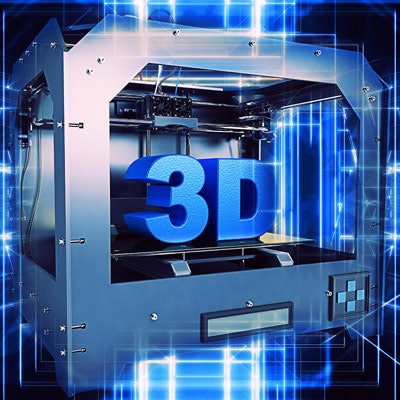
Clinicians can duplicate complete dentures quickly and easily with a general intraoral scanner and free, downloadable CAD software, according to a study published on February 3 in the Journal of Prosthodontics.
CAD/CAM simplifies the process by capturing the form of the dentures with a scanner. Then, a 3D printer or milling machine is used to complete the denture duplication process, which may result in a reduction of cost and treatment time for patients, the authors wrote.
"Using the intraoral scanner, duplication of complete dentures could be performed without needing any complicated processes, laboratory scanners, or advanced CAD software," wrote the group, led by Dr. Yutaro Oyamada, PhD, an assistant professor at the Iwate Medical University School of Dentistry in Morioka, Japan.
The duplication of complete dentures is a substitution for custom trays, occlusion rims, or treatment for temporary dentures while new ones are being made. Often, duplicates are also used as surgical and imaging templates for implant treatment.
But despite the value, copying dentures the conventional way is time-consuming. Traditionally, clinicians need to take the impression of a patient's teeth. Then, the heat-cured or self-cured resin needs to be replaced. With CAD/CAM technology, prosthodontists can simplify the process, according to the authors.
Method explained
The dental duplication technique included the following steps:
- An intraoral scanner was used to scan the original denture. Then, the complete dentures' cameo and intaglio surfaces were scanned in maxillary and mandibular imaging mode beyond the denture flange, respectively. Using the interocclusal imaging mode, margins of the dentures were scanned, and the cameo and intaglio images were superimposed. The scanned data were exported as an STL file after calibration.
- The file was imported into CAD software that can be downloaded for free.
- One image was created using the imported surface data of the cameo and intaglio surfaces. Since the data showed a slight overlap of the margins, they couldn't be used for denture manufacturing.
- The overlapping margins of the cameo and intaglio surfaces were chosen.
- Using the "smoothing boundary" command, the STL border was smoothed.
- Using the "join" command, the border was combined, and the gap between the cameo and intaglio surfaces was filled.
- The overlapping area of the connected STL surfaces revealed sharp edges, so the "sculpt" command was used to smooth them out. The data were exported as an STL file, and it was sent to the 3D printer so the dentures could be made. Another colored photo-curable resin from the 3D-printed resin at the cameo surface was used to replace the duplicate denture's gingival area.
Using an intraoral scanner speeds up the impression process. In fact, treatment can be completed in one day if a clinic has an in-house 3D printer. This new method may be valuable for the rapid manufacturing of treatment dentures and trays for functional impressions and surgical and imaging impressions and provisional restorations for immediate use.
Finally, this technique may be beneficial as the world's aging population continues to grow. The method may be useful and applicable for treating dental patients at their homes, the researchers noted.
Things to remember
Though the technique is easy and effective, it has some limitations, according to Oyamada and colleagues. Like the conventional method, this new process requires the inadaptation area of the denture to be adjusted. For example, clinicians should apply tissue conditioner to treatment dentures.
Also, the duplicate denture's gingival area was replaced with other colors of self-cured and photo-curable resins from the 3D-printed resin at the cameo surface due to only one color being available, the authors wrote.
Nevertheless, "this novel technique simplifies duplication of dentures, taking less time than the conventional method, and offers a new method for denture fabrication," they concluded.

